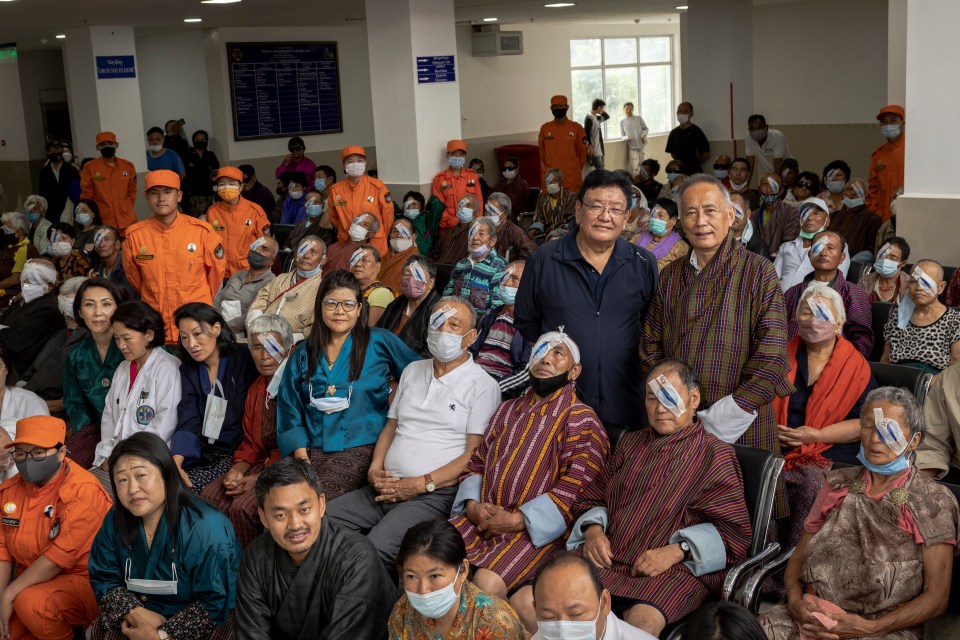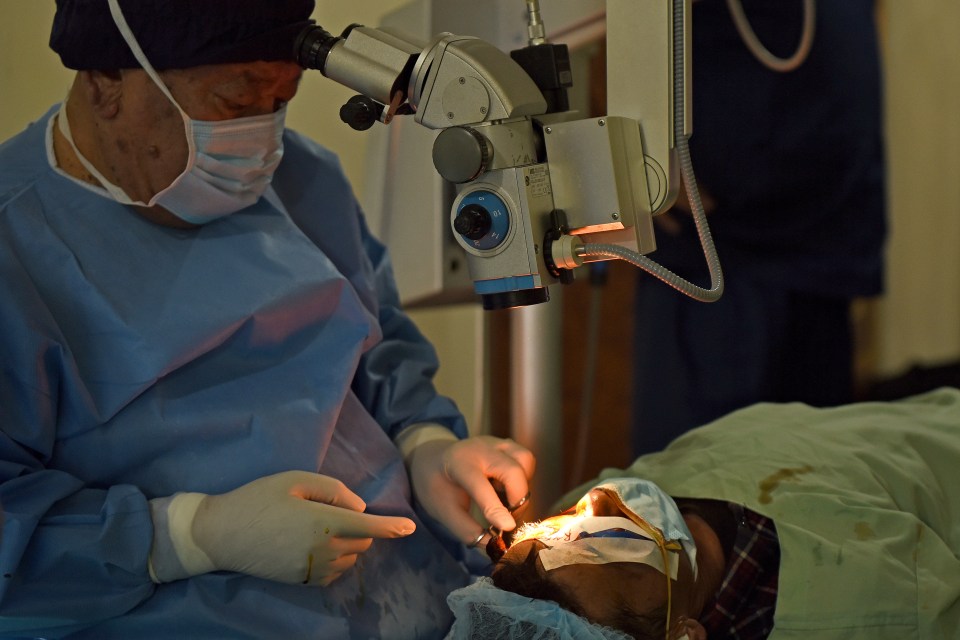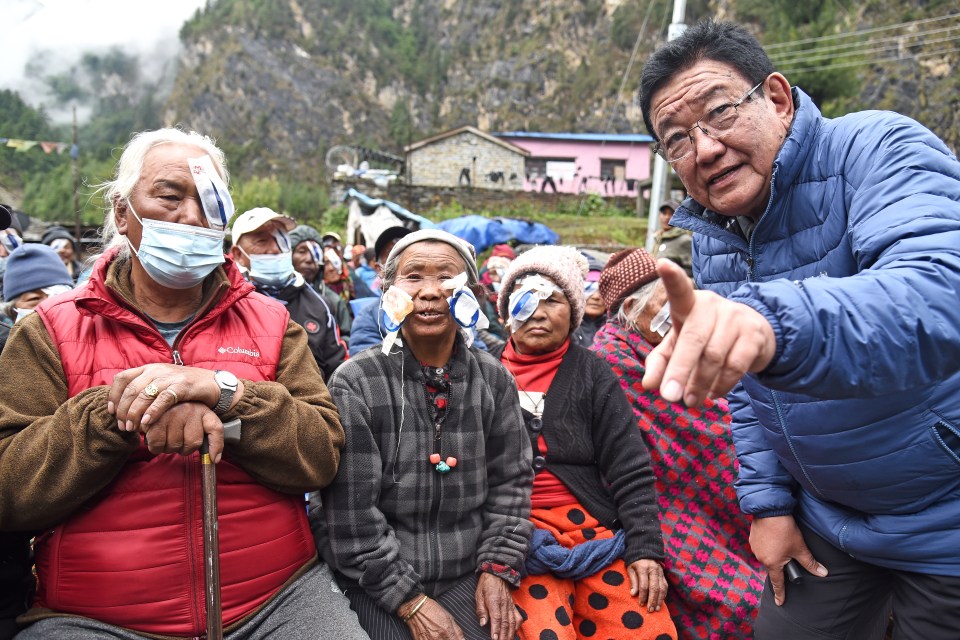
Dr Sanduk Ruit – Making a dream, a reality

The last few decades have seen innovation in healthcare like never before. One of the pioneers of this is Dr Sanduk Ruit.
Born in 1954, Sanduk Ruit was raised in the small, remote village of Olangchunggola which sat on the border of Tibet in the Taplejung district of northeast Nepal. The ice-covered village was 3200 metres above sea level and was home to around 200 people. Olangchunggola, also known as Walung village, is one of the most isolated places and sits at the bottom of Mount Kanchenjunga, the third largest mountain in the world.
Sanduk was born into one of the lowest tiers of Nepal’s strict class system. He and his family had little money and lived solely off of the land they lived on. His father, for many years, was a trader who moved backwards and forwards between Nepal and Tibet. However, after the occupation of Tibet, the trade routes quickly shut down. Still, his parents went on to have children and raised them in the mountains as they were and many generations before them. Seeing his father dedicate his life to his family and work, it is no surprise that Ruit has such strong ambitions.

Ruit has worked tirelessly throughout his life to ensure that those in need of support receive it. Sanduk was his parent’s second born following the death of their firstborn son. The family grew two years after the birth of his sister who was then followed by 2 more daughters and another son. Sanduk knew what it was like to suffer at the hands of disease and poverty. Unable to seek medical attention from their village, Sanduk’s brother passed away from dysentery, his sister had a fever and his other sister from tuberculosis. After losing his final sister to tuberculosis, he dedicated his life to becoming a doctor.
This life-defining moment is what has pushed Sanduk to change the lives of thousands across the world. From this, Sanduk pushed himself to get a good education, which began in India at the age of seven, after a short time, Ruit found himself studying back in his home country of Nepal in Kathmandu due to the India-China war. He would later go on to join the Trichandra College to then receive a scholarship to study at King George Medical School in India. This eventually led to him studying at the All India Medical College where he graduated top of his class. Each one of these steps is what led him to meet his friend, teacher and mentor Fred Hollows in the 1980s.
Meeting Hollows led to Sanduk going on to lead a prosperous career. The two set upon a journey to heal those in some of the most isolated communities across Nepal. Both Ruit and Hollows shared the same dream which was to bring affordable eye care and modern cataract surgery to all parts of the world.
Still working as hard as before, Sanduk, Professor Hollows and Gabi Hollows, with the support of many others, founded and opened the Nepal Eye Programme Australia. With this, Ruit was now able to put his dreams into practice. Opening this programme played a vital part in opening the Tilganga Eye Centre in Kathmandu, Nepal. Opening in 1994, the TEC was an integral part of the success occurring in the following years. The Tilganga Eye Centre later went on to be renamed the Tilganga Institute of Ophthalmology (TIO). The aim of the institute was to be a centre for treatment, research, education and training.

Now, over 20 years after Ruit founded the centre, the TIO now is comprised of six divisions: The Surgi Centre, a modern ophthalmology facility, an academic and training centre, an academic programme, an outreach department, a research department, the Nepal Eye Bank which operates an eye donation programme and a lens manufacturing facility which is able to produce world-class intraocular lenses at an affordable cost. Each of these facilities and programmes would not be in place without the determination of Sanduk Ruit.
One of the most vital elements of Ruit’s career is the lens manufacturing facility. Here, he and his team are able to produce around 500,000 lenses a year and are sold at a low price to 70 countries around the world. Ruit has been praised by many across the world with some calling him a true pioneer of eyesight.
All of this derived from Ruit’s goals which were to simplify the surgical technique of curing cataracts, create an excellent training system, create simple and affordable treatment methods and assist in eradicating poverty in isolated areas.
Ruit and his team went on to completely change the way cataracts were formally treated. Ruit has claimed that often in the Western world many surgeons will operate on an eye for around 45 minutes to an hour. With the revolutionised methods, he is able to cure someone of cataracts in just seven minutes. This has supported the cure of thousands upon thousands of patients in marginalised communities in developing nations.

Since co-founding the Tej Kohli and Ruit Foundation, the ophthalmologist has gone on to assist in the cure of over 18,000 people across Nepal and Bhutan. Over the last year, we have seen immense change across the communities which Dr Ruit has visited. Many individuals have returned to work with their new vision, as well as leading healthier and happier lives. The Tej Kohli and Ruit Foundation has also seen some of the most remote and isolated communities be served by Ruit’s innovative surgical techniques. With the difficult landscape that often surrounds these regions, Dr Ruit and the team have been able to streamline a way to set up microsurgical eye camps in some of the most outlandish environments.
Sanduk Ruit has visited many nations with the mission to cure needless blindness. Driven by the belief that the world’s poorest people deserve safe, high-quality and affordable eyecare, Ruit is well on his way to achieving his life’s mission of eradicating needless blindness.
The Tej Kohli & Ruit Foundation is a restricted fund operating under the auspices of Prism The Gift Fund, registered UK charity number 1099682.